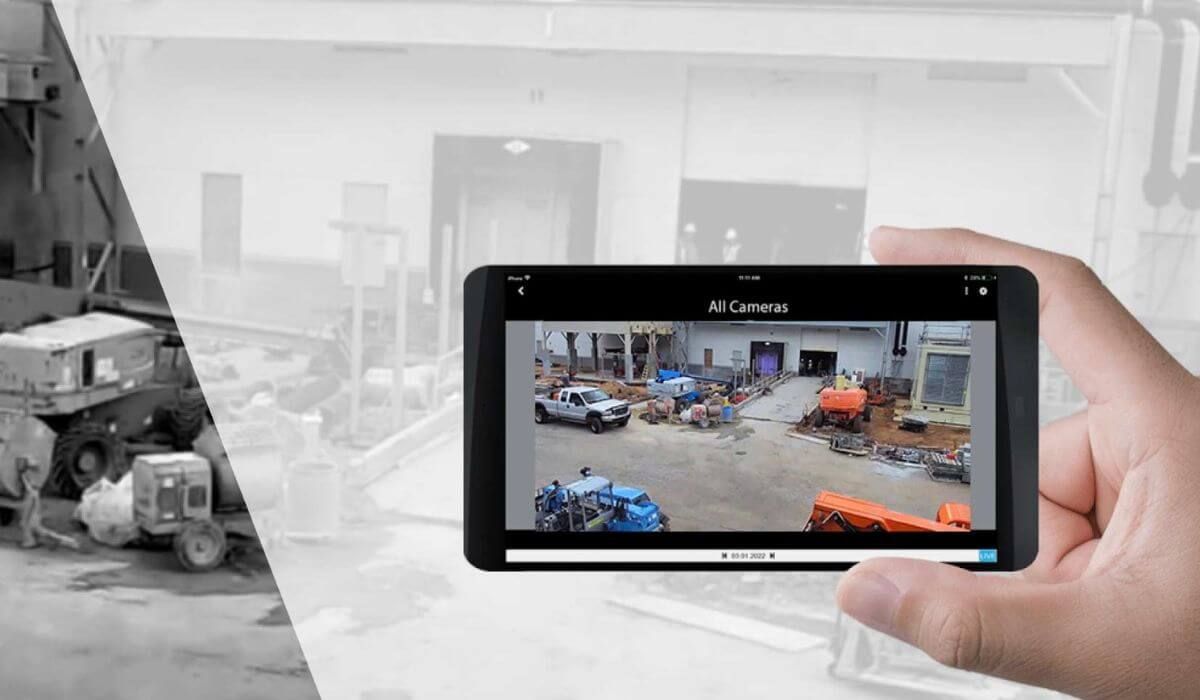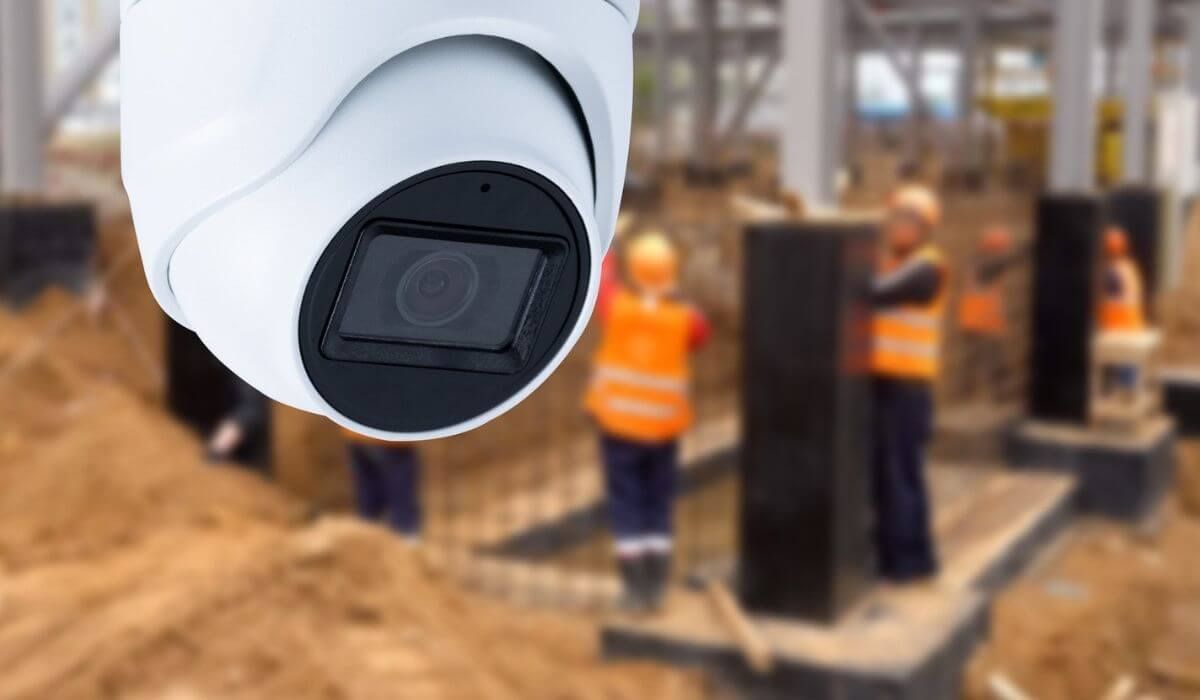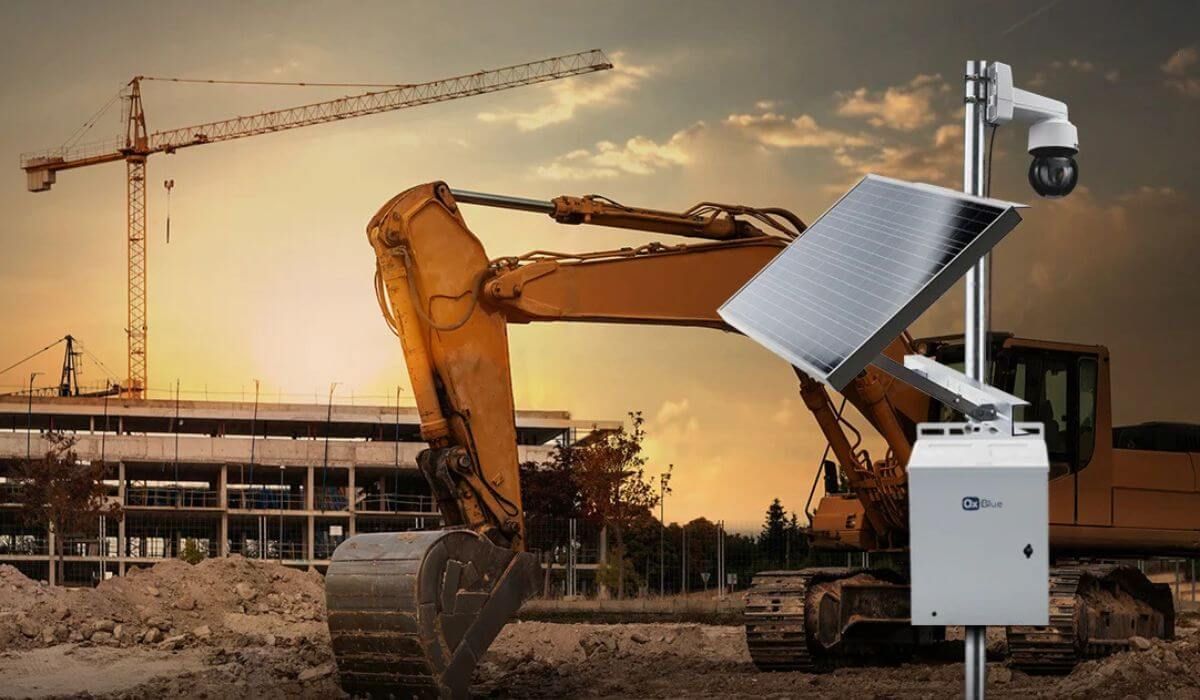Sustainable Building Design: Integrating Technology into Architecture
In recent years, the architectural landscape has undergone a significant transformation, embracing the fusion of advanced technology and sustainable design principles. This evolution, known as Smart Architecture, is revolutionizing the way we conceive and interact with our built environment. For individuals and businesses in Australia considering the integration of security cameras and audio-visual (AV) installations, understanding the nuances of Smart Architecture is crucial. It not only enhances building efficiency but also aligns with eco-efficient design and building energy efficiency standards.
Introduction
Definition of Smart Architecture
Smart Architecture refers to the integration of advanced technologies into building design and operation to enhance efficiency, sustainability, and occupant comfort. This approach leverages smart building technology, including sensors, data analytics, and automated systems, to create responsive environments that adapt to the needs of their users.
Importance of Sustainability in Modern Architecture
Sustainability has become a cornerstone of contemporary architectural practices. With the growing awareness of environmental challenges, there's an increasing emphasis on eco-efficient design strategies that minimize resource consumption and reduce carbon footprints. Incorporating sustainable practices in architecture not only addresses environmental concerns but also offers economic benefits through energy savings and improved building performance.
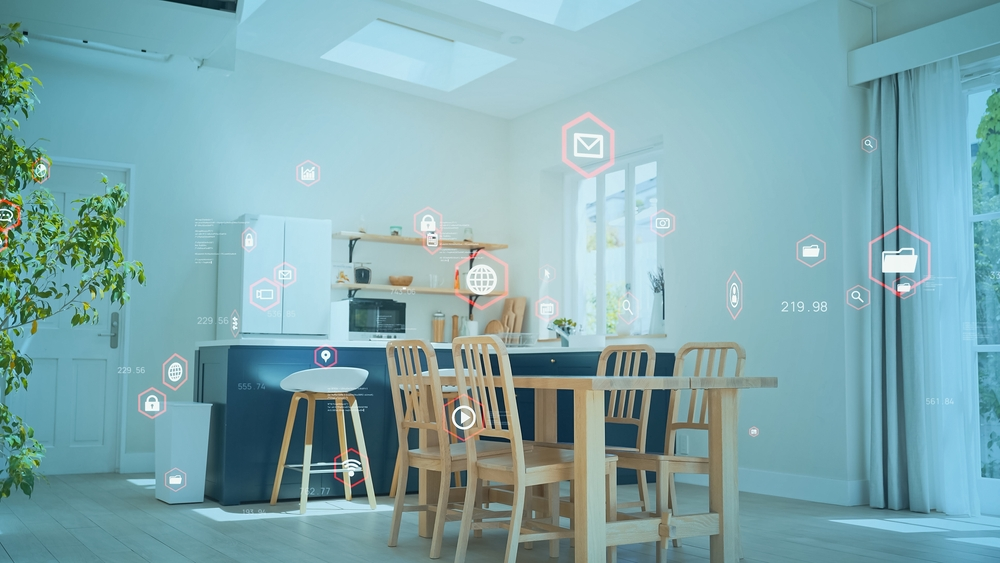
Core Components of Smart Architecture
Smart Building Systems
1. IoT and Sensor Integration
The Internet of Things (IoT) and sensor integration are at the core of smart architecture, transforming traditional buildings into intelligent, responsive environments. These sensors continuously gather data on temperature, humidity, air quality, and occupancy, enabling automated and real-time control of various systems such as lighting, heating, ventilation, and security.
For example, smart HVAC systems adjust air conditioning and heating based on room occupancy, ensuring energy efficiency while maintaining indoor comfort. Similarly, adaptive lighting systems dim or brighten based on natural light levels and movement within a space, significantly reducing unnecessary energy consumption.
IoT also facilitates predictive maintenance by identifying potential equipment failures before they occur. For instance, sensors in elevators or plumbing systems detect unusual vibrations or leaks, allowing for early repairs and minimizing costly downtime. This integration not only enhances efficiency but also extends the lifespan of critical infrastructure.
2. Data Analytics and AI
Artificial Intelligence (AI) is revolutionizing the way buildings operate by analyzing the vast amounts of data collected from IoT devices. Through machine learning algorithms, AI can detect patterns, predict occupant behavior, and optimize energy usage automatically.
One of the key applications of AI in smart buildings is predictive analytics, which helps facility managers anticipate equipment failures, schedule proactive maintenance, and reduce unexpected downtimes. This not only lowers operational costs but also enhances the safety and longevity of building systems.
Additionally, AI-powered smart assistants and building automation systems allow seamless control of multiple functions through voice commands or mobile apps. Residents and facility managers can remotely adjust lighting, climate control, and security settings, creating a personalized and energy-efficient environment.
By integrating AI and data analytics, smart buildings become more adaptive, self-regulating, and sustainable, ensuring a seamless experience for occupants.
Renewable Energy Integration
1. Solar and Wind Energy Systems
As the world shifts toward sustainable energy solutions, smart buildings are increasingly integrating solar and wind power to reduce their reliance on traditional power grids.
Australia, with its abundant sunlight, is particularly well-suited for solar energy adoption. Many modern buildings incorporate photovoltaic (PV) panels on rooftops and facades to generate electricity, reducing energy costs and carbon footprints. These solar panels work in tandem with smart energy management systems, ensuring that power is efficiently distributed based on real-time demand.
In areas with favorable wind conditions, small-scale wind turbines are also being integrated into building designs, providing an additional source of renewable energy. Combined with smart grid technology, buildings can automatically switch between renewable and conventional power sources, optimizing energy efficiency.
2. Energy Storage Solutions
One of the biggest challenges of renewable energy is its intermittency - solar power is only available during the day, and wind energy depends on weather conditions. To address this, energy storage solutions like advanced battery systems are being integrated into smart buildings.
Lithium-ion and solid-state batteries allow buildings to store excess solar or wind energy, which can then be used during peak demand hours or when renewable generation is low. This reduces dependence on the grid and lowers electricity costs.
Additionally, bi-directional energy systems enable buildings to supply stored energy back to the grid when demand is high, contributing to energy resilience and grid stability. Future advancements in hydrogen storage and thermal energy storage could further enhance the sustainability of smart buildings.
Sustainable Construction Materials
1. Eco-Friendly Materials
Smart architecture is not just about technology - it also prioritizes sustainability through the use of eco-friendly materials. Traditional construction materials often have a high environmental impact, but modern sustainable buildings are designed with:
- Recycled and reclaimed materials, such as recycled steel, reclaimed wood, and repurposed bricks, reducing waste and carbon footprints.
- Rapidly renewable resources, like bamboo and cork, which grow quickly and provide durable, sustainable alternatives to traditional hardwoods.
- Low-VOC (Volatile Organic Compound) paints and adhesives, which improve indoor air quality by minimizing the release of harmful chemicals.
- Green insulation materials, such as sheep’s wool, cellulose, and aerogels, which enhance energy efficiency without toxic byproducts.
By integrating these materials, smart buildings contribute to healthier indoor environments while minimizing their environmental footprint.
2. 3D Printing in Construction
3D printing technology is revolutionizing sustainable building design by reducing material waste, labor costs, and construction time. Unlike traditional construction methods, which require large amounts of raw materials, 3D-printed structures use only the exact amount of material needed, minimizing excess and lowering emissions.
This innovative approach allows architects and engineers to create intricate, customized designs that were previously difficult or expensive to achieve. In addition, bio-based and recycled 3D printing materials—such as concrete infused with recycled plastic—are making construction more sustainable.
Furthermore, 3D printing can be used to construct modular smart homes, allowing for rapid deployment of energy-efficient housing solutions. This is particularly useful in urban areas where housing demand is high, or in disaster-stricken regions where quick reconstruction is essential.

Benefits of Integrating Technology into Sustainable Architecture
Energy Efficiency
Automated systems in smart buildings adjust lighting, heating, and cooling based on real-time data, ensuring optimal energy usage. For example, sensors can detect when a room is unoccupied and dim the lights or reduce heating, thereby conserving energy and reducing operational costs.
Smart grids facilitate efficient energy distribution by allowing buildings to communicate with the larger power network. This interaction enables demand response strategies, where buildings can adjust their energy consumption during peak periods, contributing to overall grid stability and efficiency.
Enhanced Occupant Comfort and Health
Indoor Environmental Quality: Smart systems monitor and control indoor environmental factors such as air quality, lighting, and temperature. Maintaining optimal indoor conditions enhances occupant comfort and health, leading to increased productivity and well-being.
Personalized Settings: Smart buildings can adapt to individual preferences by learning and adjusting to occupants' habits. For instance, personalized lighting and temperature settings can be automatically applied when an individual enters a room, enhancing comfort and satisfaction.
Operational Cost Savings
Through continuous monitoring and data analysis, smart building systems can predict equipment failures before they occur. This predictive maintenance approach reduces unexpected repair costs and extends the lifespan of building systems, resulting in significant operational savings.
Efficient management of resources such as water and electricity is a hallmark of smart architecture. By monitoring usage patterns, systems can identify inefficiencies and implement conservation strategies, leading to reduced utility costs and environmental impact.
Challenges and Considerations
Initial Investment Costs
Implementing smart technologies and sustainable materials often involves higher upfront costs. These financial barriers can be a deterrent for some developers and property owners considering the transition to smart architecture.
Despite higher initial costs, the long-term financial benefits of smart architecture, such as energy savings and reduced maintenance expenses, often offset the initial investment. A thorough cost-benefit analysis can help stakeholders understand the potential returns.
Technological Integration
Ensuring that various smart systems and devices within a building can communicate effectively is crucial. Compatibility issues can arise when integrating products from different manufacturers, potentially hindering system performance.
Smart buildings rely on connected systems, making them vulnerable to cyber threats. Strong encryption, firewalls, and regular security updates are necessary to prevent hacking and data breaches.
Regulatory and Standardization Challenges
The absence of standardized protocols for smart technologies in construction can lead to inconsistencies and integration challenges. Developing uniform standards is essential for widespread adoption and interoperability.
Building owners must align smart architecture practices with Australian building codes, sustainability targets, and energy efficiency regulations to ensure legal compliance.
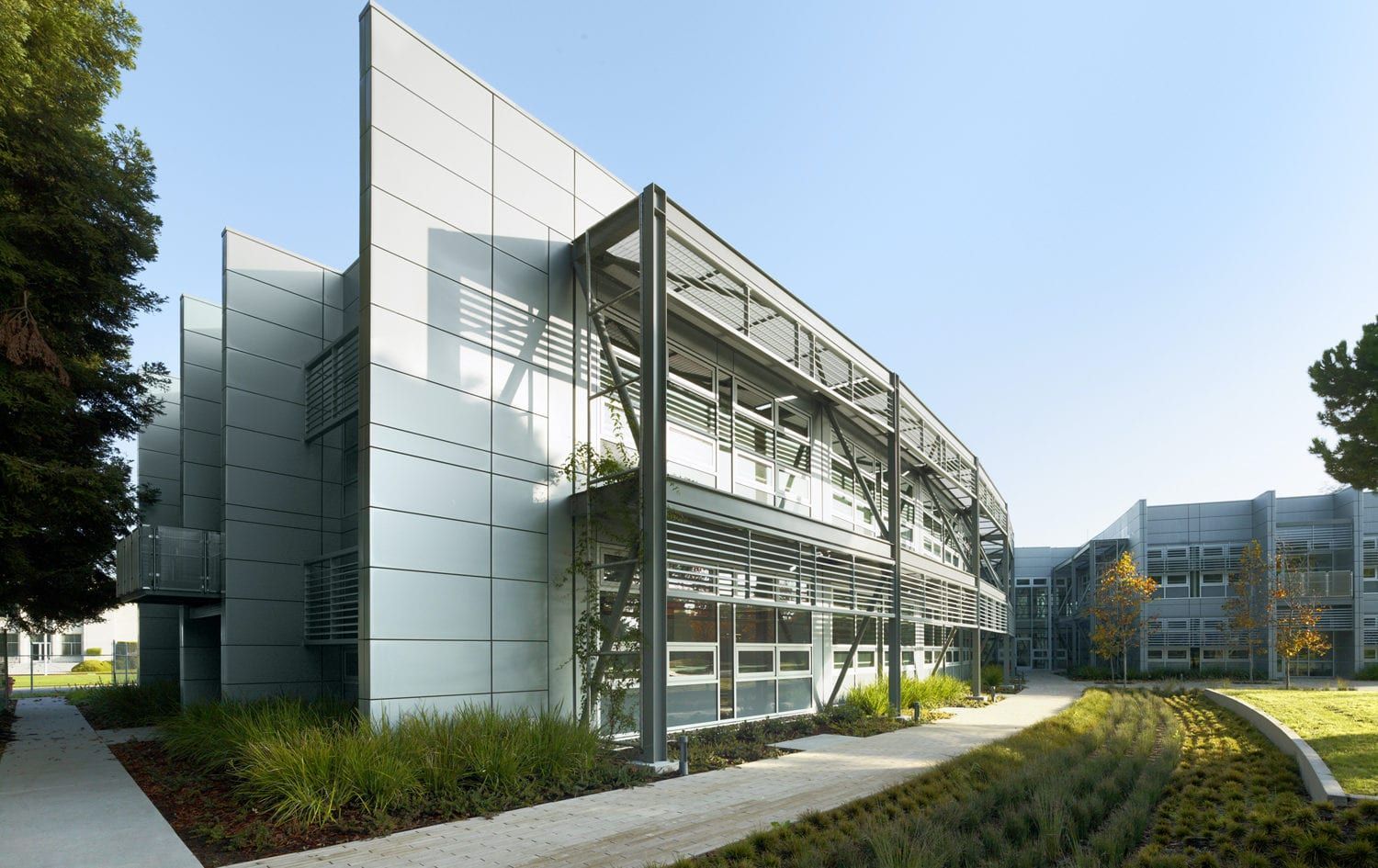
Case Studies of Smart Architecture in Sustainable Design
The Edge, Amsterdam
The Edge is one of the world’s smartest and most sustainable office buildings, setting new benchmarks for energy efficiency and smart technology integration.
This building uses IoT sensors, an intelligent lighting system, and energy-efficient construction materials to reduce its environmental footprint. It serves as a prime example of eco-efficient design in commercial architecture.
NASA Sustainability Base
The NASA Sustainability Base, located at NASA's Ames Research Center in Moffett Field, California, stands as a premier example of sustainable building design. Completed in December 2012 with a budget of $27.8 million, this 50,000-square-foot facility serves as both an operational office space and a dynamic testbed for cutting-edge energy-saving technologies.
1. Design and Architecture
Designed in collaboration with architect William McDonough, the building's lunar-shaped form draws inspiration from NASA's space exploration missions. The exoskeleton structure enhances seismic resilience and supports daylighting and shading strategies, resulting in a column-free interior that promotes workplace flexibility.
2. Recognition and Awards
In April 2012, the Sustainability Base achieved LEED Platinum certification, the highest level awarded by the U.S. Green Building Council, recognizing its exceptional environmental performance and sustainable design. The project has also received accolades such as the 2010 U.S. General Services Administration Award for Green Innovation and the 2011 White House Greengov "Lean, Clean and Green Award." - Wikipedia
3. Living Laboratory
Beyond its role as an office space, the Sustainability Base functions as a living laboratory where NASA develops and tests methods for understanding and controlling dynamic energy and water systems. This ongoing research contributes to advancements in sustainable technologies both within NASA and in broader applications - World Green Building Council.
The NASA Sustainability Base exemplifies how innovative design and technology can converge to create buildings that are not only environmentally responsible but also enhance the well-being of their occupants.
Conclusion
Smart Architecture is transforming the way buildings are designed, constructed, and operated. By integrating technology with sustainable practices, buildings can become more energy-efficient, cost-effective, and environmentally responsible.
For Australian homeowners and businesses looking to enhance security and audio-visual systems while embracing Smart Architecture, Scavi offers tailored solutions to meet your needs. Contact us today to explore how we can make your property smarter and more sustainable.

